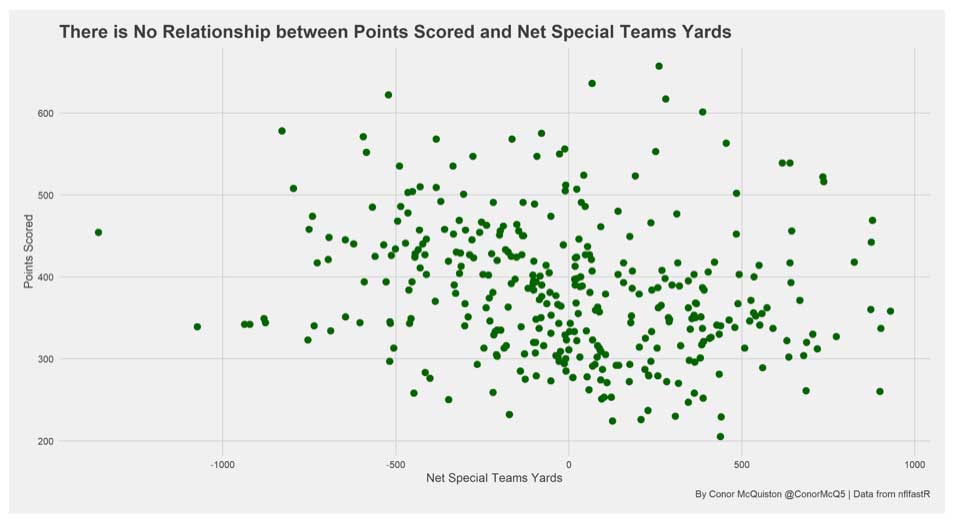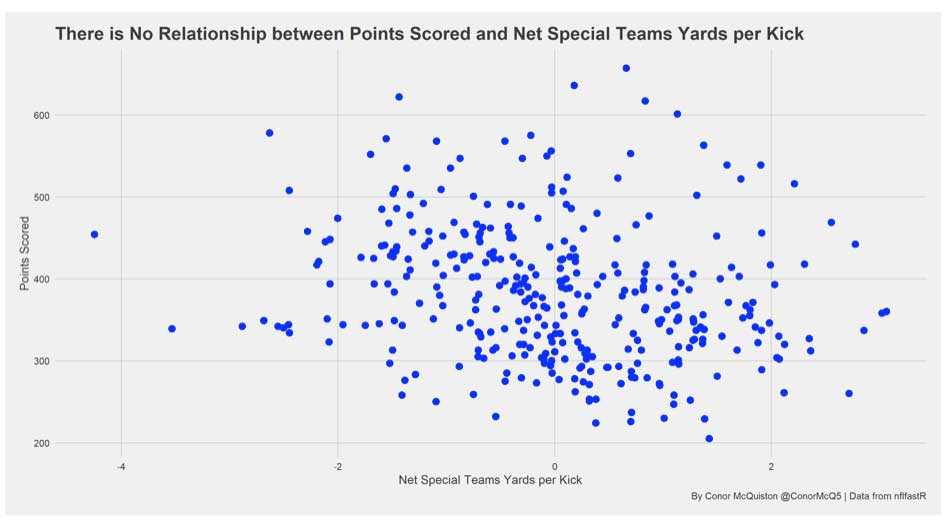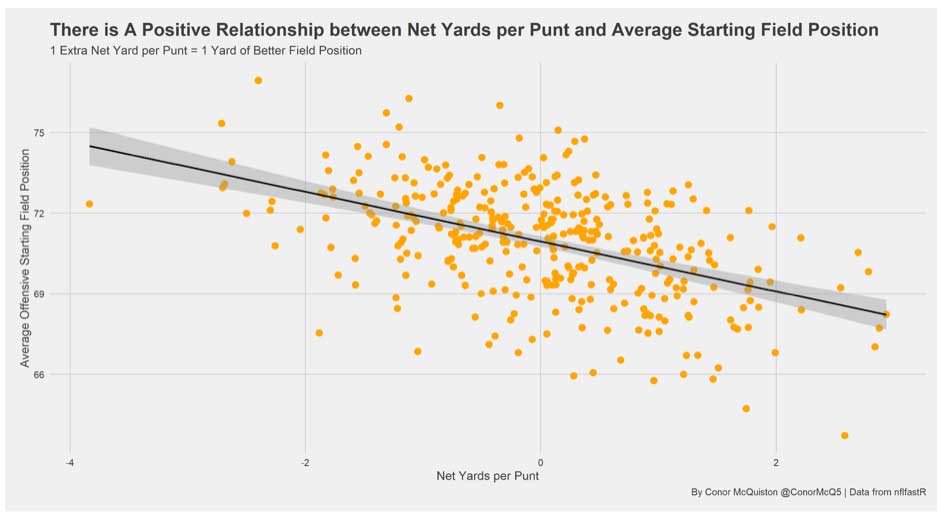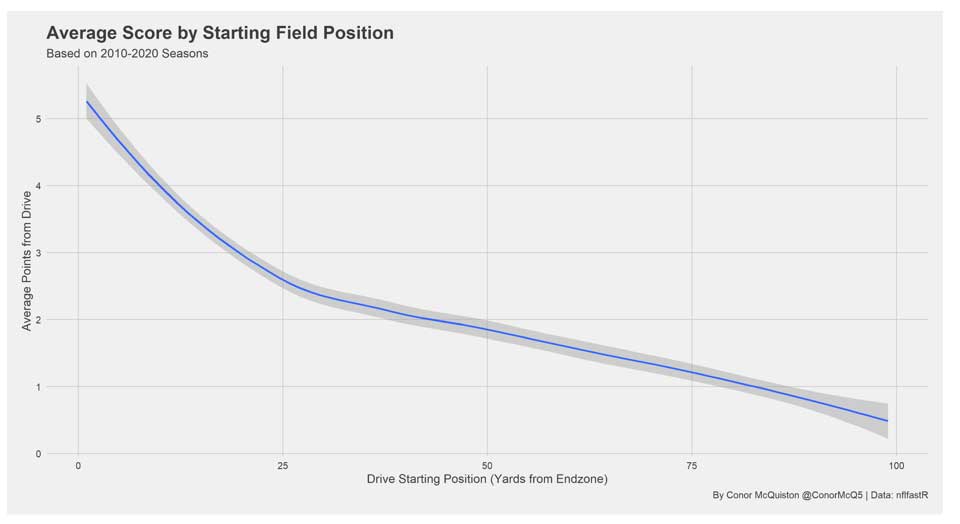Breakdowns
8/11/21
4 min read
Calculating the Value of Special Teams
It is an old Bill Parcells adage that 100 net special teams yards translates to 7 points. This is a very simple proposition, and it’s in an easily testable form. If this is true, then when we plot net special teams yards against points scored we should see a linear relationship with a slope that roughly translates to 7 points per 100 net yards.
There does not appear to be any positive or negative between a team’s net special teams yards and points scored. Now, this is something that directly contradicts one of the best football minds of the past half-century, so the odds of this being an oversimplification that misses the point are decently high. As an example, we might be overweighting bad teams. Those teams have more opportunities to return kickoffs which could yield more net special teams yards while not capitalizing on those opportunities. So maybe if we look at it on a per special teams play basis we’ll recover the desired result.
Even when viewing special teams on a per kick basis we fail to find a relationship between points scored and net special teams yards. This is far from a comprehensive look into the relationship between special team yardage and points scored, but this is strong evidence against the specific simple claim “100 net special teams yards translates to 7 points.” This isn’t a terribly unexpected result, since points scored is mostly some function of how good a given offense is vs. the defenses they are facing.
While it is certainly interesting to have evidence against a claim made by Parcells, singling out this specific claim is missing the forest for the trees. The wider point of the claim is that excellent performance on special teams generates some sort of offensive value, so the more interesting problem is determining the value of special teams. For brevity’s sake, we won’t go through every iteration tested, but the following is the strongest relationship found:
It is not much (R^2 of 0.23), but there appears to be a linear relationship between net yards per punt and average offensive starting field position. Note here that starting field position is measured as yards from the end zone, so a starting field position of 75 means the offense is on its own 25. When we explicitly fit a model to this, it gives us the somewhat obvious relationship that one extra net yard per punt translates roughly to one better yard of field position (95% confidence interval of (0.75,1.1)). Great, but how does this translate into points?
Since we have information about starting field position, it is actually a relatively easy task to tie this to points. The largest predictor of how many points an individual drive will score is starting field position. If we can calculate a drive’s expected points based on field position, then we should be able to plug in the average change in starting field position according to net yards per punt and get out an approximation of value in terms of points.
Per the earlier plot, average starting field positions for NFL teams fall neatly within the range of 65 to 75 yards to the end zone, the offense’s 35 to 25. We can approximate expected drive points well in this part of the field with a linear model, R^2 of 0.83. After fitting the model we find that a one yard difference in starting field position in this part of the field translates to roughly 0.03 expected points (95% confidence interval of (0.025, 0.034)).
Between 2010 and 2020, NFL teams averaged 243 drives per regular season, so for every additional net yard per punt an NFL offense can expect to score 7.29 more points over the course of a regular season. This is, of course, a very rough approximation at the end of a series of rough approximations, without taking into account simple confounding factors such as time remaining in the half. So the specific figure of 7.29 points per net yard per punt should be taken with a grain of salt, but this study gives us directional information that the value of special teams to an offense is on the order of a touchdown.












